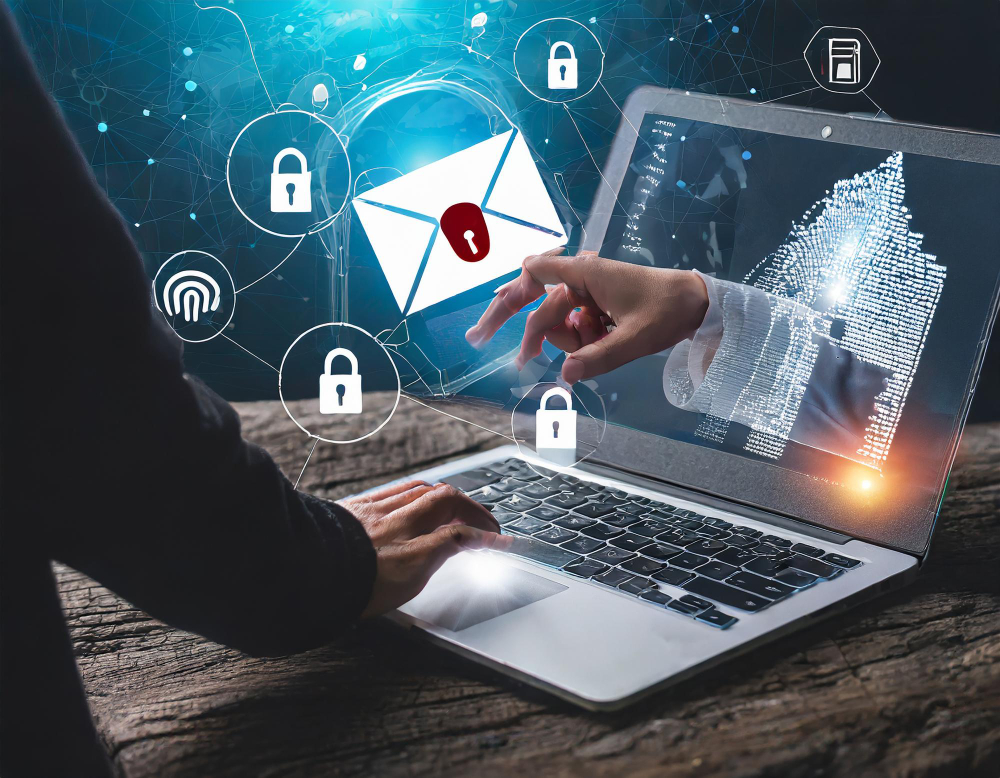Gmail Security: How IT Companies Are Ensuring Data Protection and Privacy

Introduction to Gmail Security
In today’s digital landscape, email has become an indispensable tool for communication, both personal and professional. However, with the convenience of email comes the critical concern of security.
Gmail, being one of the most widely used email platforms globally, is not exempt from various security threats. From phishing attempts to data breaches, the need to safeguard sensitive information exchanged via Gmail is paramount.
This introduction serves as a primer on the importance of Gmail security, highlighting the evolving threat landscape and the crucial role that robust security measures play in ensuring data protection and privacy for users and organizations alike.
Understanding the Threat Landscape
The modern digital world is fraught with an ever-evolving array of threats targeting individuals, businesses, and organizations.
From sophisticated phishing schemes to ransomware attacks and state-sponsored cyber espionage, the threat landscape is vast and constantly mutating.
Cybercriminals employ various tactics to exploit vulnerabilities in systems and networks, aiming to steal sensitive data, disrupt operations, or extort money.
Understanding the intricacies of this landscape is crucial for implementing effective cybersecurity measures.
By recognizing the diverse range of threats and their potential impacts, individuals and organizations can better prepare themselves to mitigate risks and fortify their defenses against cyber attacks.
Gmail Security Features Overview
Gmail app, Google’s popular email service, offers a robust set of security features to protect users’ accounts and data.
Key features include two-factor authentication (2FA), which adds an extra layer of verification to prevent unauthorized access.
Additionally, Gmail employs advanced spam filtering algorithms to identify and block suspicious emails containing malware or phishing attempts.
Encryption is another critical aspect, ensuring that messages and attachments are transmitted securely over the internet.
Furthermore, Gmail incorporates machine learning algorithms to detect and alert users about potential security threats in real-time.
These comprehensive security measures collectively safeguard users’ privacy and confidentiality, reinforcing Gmail’s reputation as a secure email platform.
Advanced Threat Protection
Advanced Threat Protection (ATP) encompasses a suite of sophisticated security measures designed to defend against emerging and evolving cyber threats.
In the context of Gmail, ATP employs cutting-edge technologies like machine learning and behavioral analysis to proactively identify and neutralize malicious email content.
This includes blocking suspicious attachments, scanning URLs for potential threats, and flagging messages exhibiting abnormal behavior patterns.
ATP goes beyond traditional security measures, providing real-time threat intelligence and rapid response capabilities to mitigate risks effectively.
By leveraging ATP, organizations can bolster their email security posture, safeguard sensitive data, and mitigate the impact of sophisticated cyber-attacks on their Gmail accounts.
Data Loss Prevention (DLP)
Data Loss Prevention (DLP) is a crucial component of Gmail security, aimed at preventing unauthorized disclosure of sensitive information.
DLP tools, offered by some of the Best IT Companies, scan outgoing emails for specific patterns or types of data, such as credit card numbers, social security numbers, or confidential documents, and enforce policies to prevent their inadvertent or malicious transmission.
By identifying and blocking risky outbound emails, DLP safeguards sensitive data from falling into the wrong hands, mitigating the risk of data breaches and regulatory non-compliance.
Furthermore, DLP solutions often provide monitoring and reporting capabilities, enabling organizations to maintain visibility into data flows and ensure compliance with privacy regulations.
Email Encryption Techniques
Email Encryption Techniques employ cryptographic algorithms to secure the contents of email messages, protecting them from unauthorized access during transmission and storage. End-to-end encryption ensures that only the intended recipient can decrypt and read the message, even if intercepted during transit.
Transport Layer Security (TLS) encrypts emails in transit between mail servers, preventing eavesdropping and tampering.
Secure/Multipurpose Internet Mail Extensions (S/MIME) and Pretty Good Privacy (PGP) are popular encryption standards for email, providing digital signatures for message authenticity and integrity.
These encryption techniques are essential for safeguarding sensitive information exchanged via email, ensuring confidentiality and privacy for users.
User Training and Awareness
User Training and Awareness play a pivotal role in bolstering email security. By educating users about common email threats such as phishing, malware, and social engineering tactics, organizations empower individuals to recognize and respond effectively to suspicious emails.
Training programs provide guidance on identifying red flags, verifying sender authenticity, and avoiding risky behaviors like clicking on unknown links or downloading attachments from unfamiliar sources.
Additionally, fostering a culture of security awareness instills a sense of responsibility among users, encouraging proactive vigilance in safeguarding sensitive information.
Ultimately, well-informed users serve as a critical line of defense against email-related security breaches and cyber attacks.
Third-party Security Integrations
Third-party Security Integrations enhance Gmail’s security posture by integrating specialized security solutions into the email ecosystem.
These integrations augment native Gmail security features with additional layers of protection against evolving threats.
Examples include email gateway solutions that provide advanced threat detection and prevention capabilities, security information and event management (SIEM) platforms for centralized monitoring and analysis of email-related security incidents, and endpoint security tools that offer real-time protection against malware and phishing attacks.
By leveraging these integrations, organizations can strengthen their defenses, enhance threat visibility, and ensure comprehensive protection of their Gmail environments against a wide range of cyber threats.
Compliance and Regulatory Considerations
Compliance and Regulatory Considerations are paramount in ensuring Gmail security aligns with legal requirements and industry standards.
Regulations such as GDPR, HIPAA, and SOC 2 impose strict guidelines on the handling and protection of sensitive data transmitted via email.
Organizations must implement measures to safeguard user privacy, prevent data breaches, and maintain compliance with these mandates.
This entails implementing encryption protocols, access controls, and auditing mechanisms to protect confidential information.
Moreover, adherence to regulatory standards fosters trust with customers and partners, demonstrating a commitment to data protection and privacy, and mitigating the risk of penalties or legal repercussions for non-compliance.
Best Practices for Ensuring Gmail Security
Best Practices for Ensuring Gmail Security involve a multifaceted approach to safeguarding email accounts and data.
Implementing strong, unique passwords and enabling two-factor authentication (2FA) adds an extra layer of protection against unauthorized access.
Regularly updating software and promptly applying security patches helps mitigate vulnerabilities.
Users should exercise caution when clicking on links or downloading attachments from unknown sources to prevent phishing and malware attacks.
Additionally, encrypting sensitive emails and enforcing data loss prevention (DLP) policies further enhances security.
Continuous user education and awareness programs reinforce good security habits, ensuring a proactive defense against evolving threats and maintaining the confidentiality and integrity of Gmail accounts.
Conclusion
In conclusion, Gmail Security remains a top priority for IT companies striving to safeguard users’ data and privacy. Through a combination of robust security features, advanced threat detection technologies, and user education initiatives, IT companies are committed to fortifying Gmail against evolving cyber threats, ensuring a secure communication environment.

Professional Branding Strategy Services: Why Your Brand Needs More Than a Logo

The Rise of Modern Payment Platforms: What to Try This Year

How Advanced Freight Broker Software Shapes a Profitable, Productive Supply Chain

AI in Marketing Is No Longer a Buzzword — It’s the Strategy

Srinivasa Rao Challa Champions AI-Powered Financial Systems for a Smarter, Safer Economy

THCA Pre-Rolls: The Convenient, Legal High You’ve Been Waiting For

How Gen-Z and Millennials Are Reinventing the Side Hustle

Is Book Scanning Legal? What You Need to Know Before Digitizing Books








